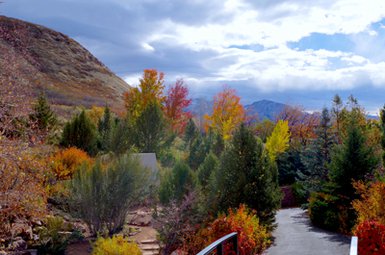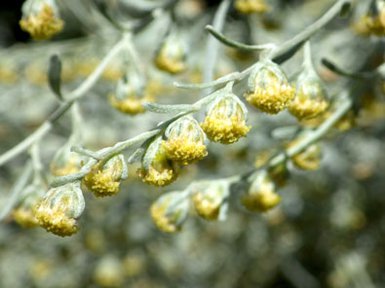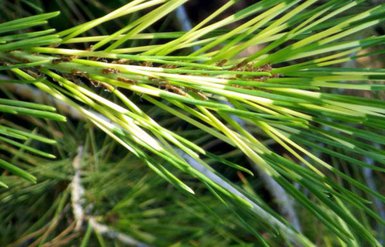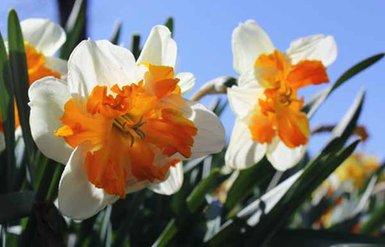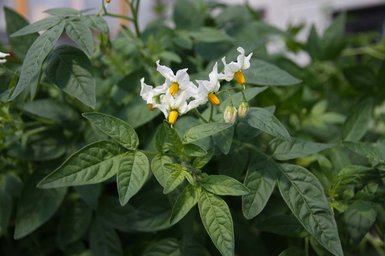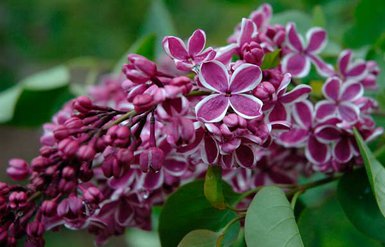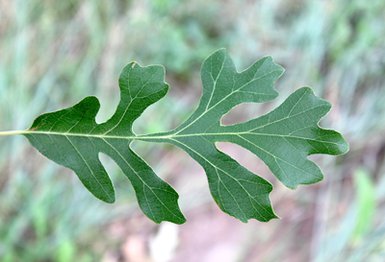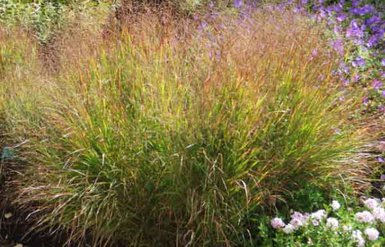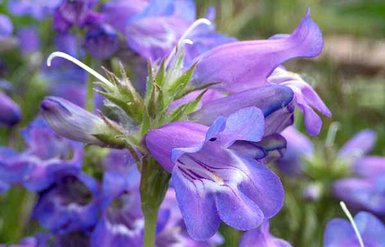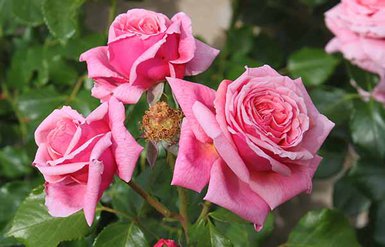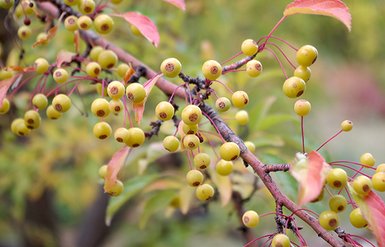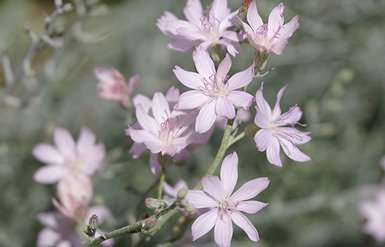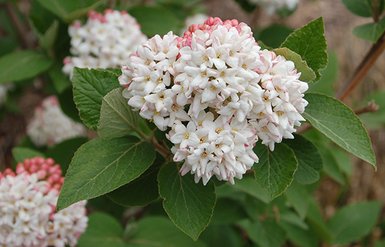
Red Butte Garden is a museum of living plants. Plants are collected for their horticultural merit, use in research and conservation, and for their historical value. Each plant is given an accession number and carefully curated within the collections.
We are happy to share information about a few of our collections below with slideshows and downloadable documents.
Red Butte Garden has several types of plant collections and each accession falls into one or more of the following categories:
- Arboretum: A collection of trees, held jointly on the University of Utah campus and Red Butte Garden.
- Ecological: Plants native to Utah.
- Ethnobotanic: Plants that have a history of use by humans.
- Geographic: Plants with horticultural value from other states or countries that perform well in our climate.
- Research/Conservation: Threatened, rare, and endangered species.
- Taxonomic: Represents species, varieties, and cultivars of select taxa.
Aside from our impressive collections, we also maintain a variety of ornamental displays. Displays are plants that are not included in our curated plant collections. We do not keep the same records on them. Rather, they are used to enhance our landscape plantings. Our most noteworthy displays include: Daffodils, Miniature Bulbs, and Succulents.
Arboretum Collection
Trees are perennial plants that have one to several trunks and develop branches above the ground. What sets them apart from other perennial plants is that they create secondary xylem, more commonly known as wood, which makes them rigid enough to grow to hundreds of feet tall. They are found on every continent except Antarctica and are some of the oldest living organisms on the planet. Trees provide shade and wind buffering and can reduce home cooling costs while increasing property value.
Red Butte Garden is home to more than 1,900 trees that can be found in every themed garden as well as all throughout the Natural Area.
In September 2022, Red Butte Garden received Arboretum Level II Accreditation by ArbNet, part of the Morton Register of Arboreta.
Artemisia Collection
Artemisia, whose species are more commonly referred to as sagebrush, mugwort, and wormwood, is a diverse assemblage of more than 400 species. They are found on every continent except Antarctica, and in every state in the U.S. Utah is home to 19 native species and 20 subspecies, growing in a wide range of habitats from hot deserts to foothills, rocky slopes, and high elevation mountainsides.
Members of this collection can be found throughout the Garden. The Natural Area also includes two species of native Artemisia, Louisiana wormwood (Artemisia ludoviciana) and big sagebrush (Artemisia tridentata).
Conifer Collection
Conifers are woody plants that bear cones. They range in size from the tallest tree in the world (Sequoia sempervirens or Coast Redwood) to small dwarf varieties. Conifers are also among the oldest known trees, with Methuselah, a Bristlecone Pine from California, estimated to be around 5,000 years old. Most conifers are recognized by their needle-like foliage and are often described as evergreens, however, some varieties such as Larches and Bald Cypress, are deciduous, losing their leaves in the fall.
At Red Butte Garden, the purpose of our Conifer Collection is to display a wide variety of conifer and other gymnosperm taxa emphasizing the diversity of size, form, color, and texture and to showcase the assortment of conifers available for use in the home landscape.

Red Butte Garden has been designated as a conifer reference garden by the American Conifer Society. We were selected because of an exceptional collection of coniferous taxa and a continuing commitment to their display and preservation. As of 2017, Red Butte Garden is home to 216 different conifer taxa.
Daffodil Display
Red Butte Garden presents a stunning display each spring of over 524,000 bulbs (as of March 2020), over 239,000 of which are daffodils. Daffodils were chosen as a prominent component due to their long lifespan, wide diversity of color, size, and bloom type—and dislike by wildlife such as deer and squirrels.
The Red Butte Garden daffodil display originated in the Four Seasons Garden in 2003. The Four Seasons Garden, situated on a hill facing the Visitor Center, is the first garden area our guests experience when they visit. This garden space, composed of large masses of plants best appreciated when viewed from a distance, lends itself well to massive displays of thousands of daffodils, with varieties chosen that, due to their size and color, stand out from a distance.
In 2013, Red Butte Garden was recognized as an official Daffodil Display Garden by the American Daffodil Society. Our display represents all 13 recognized divisions, which are based on floral parts and species derivation.
Ethnobotanical Collection
Ethnobotanists explore the entwined, ongoing coevolution of people and plants. Their studies focus on the intersection of botanical life and human ingenuity in both past and present cultural practices. Plants used for medicine, tools, art, ceremonies, shelter, and food can give us clues to hone our understanding of the past, extending into our present, and informing our future.
There is a vast amount of ethnobotanical plants all around the world. They cover a wide range of habit types and include trees, shrubs, forbs, and herbs, with perennial, biennial, and annual lifecycles.
Many plants comprise a multitude of uses, as well as different uses between cultures. What might be useful to one culture, might not be useful to another, or may be used in a completely different way.
At Red Butte Garden, our Ethnobotanical Collection emphasizes medicinal plants, plants for food and beverages, and those with cultural importance and noteworthy local stories.
Lilac Collection
Native to southeastern Europe and eastern Asia, Lilacs belong to the genus Syringa. The name Syringa is derived from the ancient Greek word “syrinx,” which means “hollow stem,” referring to the straight, hollow young branches that were once used to make flutes. While in the wild there are only 12 species of Lilac, worldwide horticulturists have created over 2,000 named hybrids and cultivars, most of which arise from the Common Lilac, Syringa vulgaris. Lilacs belong to the same family as the olive, ash, forsythia, and jasmine.
Lilacs are trees or shrubs that range in size from 3 feet to 35 feet depending on the species or variety. Most varieties produce heart or spade-shaped leaves arranged in pairs along the stem, with a few species producing dissected leaves or leaves that encircle the stem.
Lilacs are located throughout Red Butte Garden, with the greatest diversity of the collection along the bottom of the Floral Walk, a few re-blooming varieties in the Water Conservation Garden, and some impressive tree lilacs in the Fragrance Garden meadow. The best time to view this beautiful and fragrant collection is from mid-April to mid-May.
Oak Collection
Oaks are native to the Northern Hemisphere and includes both evergreen (often called “live oaks”) and deciduous species. They are often the dominant species in hardwood forests and support a wide range of animal species.
This is the collection that started it all at Red Butte Garden. Our oak collection consists of more than 35, one-of-a-kind oaks hybridized by Dr. Walter Cottam in the 1960s, as well as 16 other species and cultivars. The majority of this unique collection can be seen in Cottam's Oak Grove, west of the Amphitheatre, with several other specimens scattered throughout the Garden.
Ornamental Grass Collection
At Red Butte Garden, the purpose of our Ornamental Grass Collection is to display a wide variety of non-invasive ornamental grasses and grass-like plants, emphasizing the diversity of taxa, size, form, color, and texture.
As we continue to expand and diversify our collection, we seek to increase the diversity of genera, species, varieties, and cultivars that demonstrate the variety or ornamental grasses available for the home landscape and how they perform in our region.
Penstemon Collection
Penstemon, commonly known as beardtongue, is one of the largest genera of flowering plants endemic to North America. Containing roughly 250 species, they are found naturally in every state except Hawaii, with the most species being found in the Western United States. With 100 species, Utah is home to the highest number of native Penstemon, including approximately 20 species that are rare or threatened. Their habitat ranges from alpine to hot desert conditions.
Penstemon species are known for their attractive, long-lasting, tubular flowers that come in a variety of bright colors, from the less common white and yellow to the more common blue, purple, pink, and red. Beardtongues are able to sustain a high number of pollinators due to the large volume of nectar they contain. The diversity of flower shapes, colors, and arrangements reflect individual species' specializations to attract specific pollinators, including bees, butterflies, and hummingbirds.
Like Utah, the Garden also has a diverse selection of Penstemon species including native species, rare taxa, hybrids, and cultivars. Our collection can be seen throughout the Garden, with the majority planted in the Water Conservation Garden and the Visitor Center Entrance Gardens.
Rose Collection
Roses are among the most loved flowers in the world. There are about 150 distinct species, all found only in the northern hemisphere. Modern rose varieties began to appear in the late 18th century when repeat-blooming roses from China were introduced to Europe. Today, there are a wealth of roses available from which to choose, from hybrid teas and floribundas to shrub roses and ground covers, from climbers and ramblers to miniatures. Old roses and species roses also add their beauty and charm to gardens.
At Red Butte Garden, the purpose of our Rose Collection is to display a wide variety of roses emphasizing a diversity of ornamental characteristics such as: flower color, form and fragrance; fall/winter interest, plant size, form and texture.
As our collection grows, we strive to obtain species and cultivars of all rose classes that are winter-hardy and with an emphasis on disease resistant to showcase the variety of roses that thrive in Utah.
Malus Collection
Malus, the genus that encompasses both apples and crabapples, showcases an impressive diversity of size, form, and ornamentation. These deciduous trees range in height from a diminutive 10 feet to a towering 30 feet.
The Malus collection at Red Butte Garden is a testament to this diversity, with over 20 varieties represented. Visitors can wander through a tapestry of blooming crabapples in spring, their branches laden with a profusion of white, pink, or red blossoms. The delicate fragrance of these blossoms fills the air, creating an unforgettable sensory experience.
As spring transitions into summer, the crabapples produce a bounty of small, colorful fruits, ranging from yellow to bright red and orange to deep crimson. These fruits, though often too tart for human consumption, provide a feast for birds and other wildlife, adding another layer of vibrancy to the garden.
Whether in bloom, in fruit, or ablaze with autumn hues, the Malus collection at Red Butte Garden is a delight to behold, offering a captivating display of the genus's remarkable diversity and beauty.
Utah Native Collection
Nestled amidst the captivating array of plant life at Red Butte Garden, our Utah Native Collection stands as a testament to the unique beauty and diversity of the state's flora. This collection showcases a remarkable assemblage of native plants, each selected to represent the rich tapestry of Utah's natural landscapes.
This collection highlights an array of plant species that have evolved to thrive in the diverse environmental conditions of the state, from the lofty heights of alpine meadows to the arid expanses of desert landscapes. These resilient plants, each with their own unique adaptations, bear witness to the remarkable adaptability of life.
Red Butte Garden is proud to showcase Utah's native flora and to educate visitors about the importance of these plants in our ecosystem. Our natives are planted throughout our various gardens and those that belong to this collection will have the Utah native symbol on their label. We encourage you to visit the Garden and experience the beauty of our Utah Native Collection firsthand.
Viburnum Collection
Viburnums are a diverse group of shrubs and small trees native to many parts of the world, including North America, Asia, and Europe. They are known for their showy flowers, which range in color from white to pink to red and for their intoxicatingly sweet fragrance. They also have attractive foliage that turns a brilliant red or orange in the fall along with colorful berries, which provide food for birds and other wildlife.
Red Butte Garden's Viburnum collection is a beautiful and diverse collection of these popular shrubs and trees. The collection is a valuable resource for gardeners, researchers, and enthusiasts alike, and is a popular attraction for visitors throughout the year.
